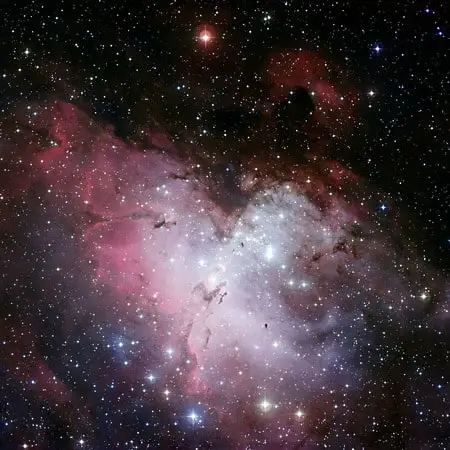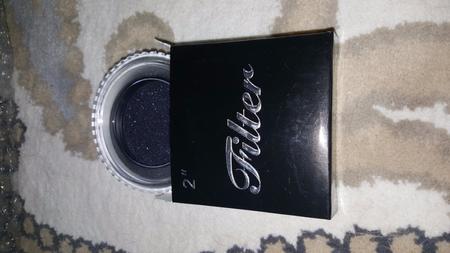The 80A or 82A blue filter enhances most of the things a beginner astronomer looks at. This would be improving views of the Moon, looking at Mars, Clouds of Jupiter, and the rings of Saturn.
By blocking the blue light this filter allows the other colors to be enhanced and thus creating more contrast for the vividness of your object.
Stars are also enhanced when you try to look upon them; A good example here is looking at the star Antares. Blocking the blue light of the star allows for the distinction between the two individual Stars.

This is the same image as the main image of the crab nebula. As an example the main image has no blues really. This image has some blue.
Let’s dig into some more on this blue filter.
Typically cost
Since Amazon is such a humongous almost conglomerate anymore, I’m going to use them as a price scale. There’s a good chance though that you may be able to find some cheaper ones somewhere else, looking for used ones on eBay or Facebook Marketplace? However, let’s go in and talk about new ones from here on out.
To learn more about What To Look For In A Used Telescope, Click here.
Prices seem to range from $9 to $55 for an 80A, or the 82A blue filter. Where the average cost of some name-brand filters is more in the range of $15 to $28.
So what’s the difference between the two filters
The 80A filter Blocks more blue light, Or maybe we should say allows less transmission of blue light. The 80A allows about 27-30% blue light transmission through the lens. The 82A allows about 70 to 73% blue light transmission through its lens.
So, what does all that mean? It basically means that the size of the aperture on your telescope makes the difference of what filter will work best for you. The bigger the aperture, the more apt you will want the 80A.
What Size Aperture For Which Filter
To keep this simple, I’m going to break it down into chunks. However, it is basically based on your own eye and enjoyment of your own View.
If your telescope is 100 mm or less in diameter for the aperture, I would say start with an 82A. If your telescope is over 130 mm, or 5 inches in diameter of the aperture, I would start with an 80A.
The beauty of good telescope filters are the fact you can stack them. So it doesn’t hurt to own both. Because once you get above eight or 10-inch diameter, you may need that ability.
Why You Should Own It
This part is pretty much straightforward, the reason you should own one of these is that it is the most versatile. You can own a moon filter which filters the moon better, but then that’s pretty much all it can do.
So if you’re only going to own one filter, you get the most bang for your buck or Sterling (dependent where you are from) with the blue 80A or 82A filter.
What I Have Found
If you are a beginner, a lot of the filter’s ability is based on how big your aperture is on your telescope is. Because apertures or diameter of the telescope allow more light to funnel into your eye. Basically, it just means that if you own a bigger aperture, you may need a darker blue filter to get the same results.
A telescope of 50 mm or so you can jump to a moon filter because that’s really the only detail you will see. That’s why I don’t recommend any telescope purchase under 70 mm.
Please take a look at this article; on the telescope that’s best for a beginner and how complicated it actually is to pick one out of all the options. Hopefully, the article will help you narrow down the results.
So Which Filters Do I Recommend?
Why I do have recommended gear section and filter options, I’m not going to limit it to just one or two here. I’m going to allow you to go through and pick what works best for you and the price range that is best for you.
So from the above info, hopefully, you realize how vital a blue filter is for your astronomy endeavor. Here are links to all the blue filters on Amazon. Click here for the 82A Filters. Click here for the 80A filters.
Need More?
There is a more comprehensive article on filters; Telescope Filters Which Ones To Use And Where. It will help you understand the importance of using filters in your astronomy hobby. This article has a cool quick table to allow you to pick some different colors based on what you want to look at too.
Other articles that may assist you.
Top 10 Barlow Lenses 1-¼” and 2”, and Why I Pick Them
Telescope Magnification, Where Does It Get Blurry
Will Montgomery shares how 80A and 82A filters performed in real-world use — and how picking the right one can save you money on unnecessary filters.


